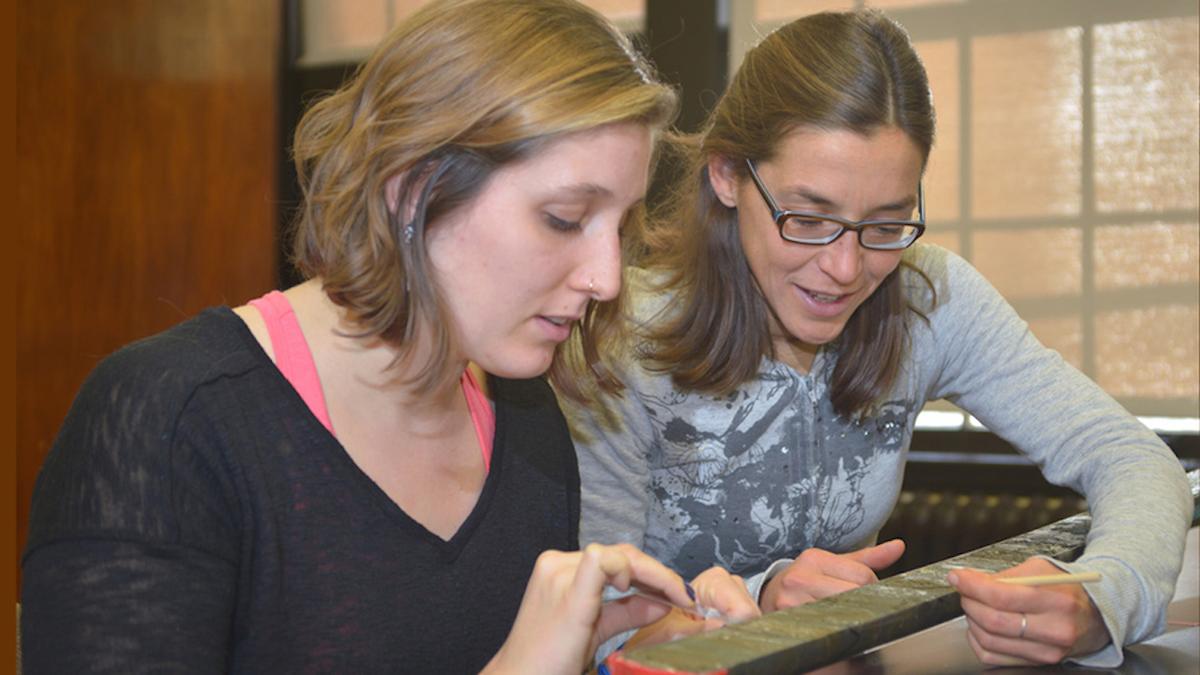Laura Cappio has three mentors tossing opportunities her way as fast as she can keep up. Not just any opportunities, but prestigious international gigs. As a graduate student in Earth and Environmental Sciences, and a talented scientist to boot, Laura is working closely with faculty at UMD's Large Lakes Observatory (LLO).
Laura’s thesis examines the history of climate in East Africa, as recorded in lake sediments. She works with sediment cores recovered through the Smithsonian Institution’s Olorgesailie Drilling Project in Kenya That work is supported by grants from the National Science Foundation to Laura’s co-advisor, Professor Erik Brown. Olorgesailie is a key archeological site famed for abundant handaxes and other stone. "The project is really important because it is looking at the climate records from a million years ago when early hominins lived there," Laura said.
At the LLO lab in Duluth, Laura works with a sophisticated core scanner, called the ITRAX XRF to examine sediments. This instrument, one of only three in the United States, "allows us to sample the whole core without disturbing the sediment," Laura said. It makes chemical analyses and takes x-rays. "The XRF is in serious demand; we keep it running all the time," she said.
In summer 2015, Laura’s other co-advisor, Assistant Professor Byron Steinman, enticed Laura and another graduate student, Chris Shea, into some grunge work. They were paid as graduate assistants, but the work was definitely arduous. They used an inflatable boat and light, but powerful, hand drilling rigs to gather sediment cores from lakes in the state of Washington, British Columbia and Alberta, Canada.
That meant long hikes carrying the boat and equipment on their backs and hours of drilling and dragging cores to the surface. And then they packed it up and carried it all back to the road. "I really enjoyed it. It was exciting," Laura said. "Some of the lakes had never been studied before and we should get some good data about drought cycles going back 6,000 years or more." (See Laura's video).
Erik also helped to land a trip to Macedonia for Laura. Laura was selected for a training course geared toward young scientists by the Intercontinental Scientific Drilling Program. She sailed out on a drilling rig for a first hand look at drilling techniques in Lake Ohrid. "The lake is deep and about five million years old," she said. “It still has over 200 species of fish and other organisms that aren't found anywhere else in the world."
Laura has a third mentor at UMD, Mona Stockhecke, a post doctoral research associate at LLO. Mona’s work focuses on climate records from East African sites including Olorgesailie. She has been working with Laura using UMD’s scanning electron microscope and on statistical analyses of her data. In addition to being an up and coming scientist, Mona finds time to be world-class marathon runner. Between races and working with international scientific projects, she zips in and out of Duluth.
Laura's master's thesis is in progress and Laura will graduate in spring 2016. After that? Laura's not sure. She may continue with research but she's also considering teaching, and if that happens, her students will be fortunate to have her.
